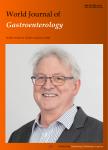Qualitative and quantitative analyses of the bifidobacterial microbiota in the colonic mucosa of patients with colorectal cancer, diverticulitis and inflammatory bowel disease
Qualitative and quantitative analyses of the bifidobacterial microbiota in the colonic mucosa of patients with colorectal cancer, diverticulitis and inflammatory bowel disease作者机构:Functional Food Forum Department of Biochemistry and Food Chemistry University of Turku Turku Finland and Instituto de Productos Lácteos de Asturias (IPLA- CSIC) Villaviciosa Asturias Spain Functional Food Forum Department of Biochemistry and Food Chemistry University of Turku Turku Finland and Health and Nutrition Danisco Kantvik Finland Department of Surgery Turku University Hospital Turku Finland Department of Oncology Turku University Hospital Turku Finland Functional Food Forum Department of Biochemistry and Food Chemistry University of Turku Turku Finland
出 版 物:《World Journal of Gastroenterology》 (世界胃肠病学杂志(英文版))
年 卷 期:2007年第13卷第29期
页 面:3985-3989页
核心收录:
学科分类:1002[医学-临床医学] 100201[医学-内科学(含:心血管病、血液病、呼吸系病、消化系病、内分泌与代谢病、肾病、风湿病、传染病)] 100214[医学-肿瘤学] 10[医学]
基 金:We wish to thank Nina Kainulainen for her excellent technical assistance during this study
主 题:Bifidobacterium Colonic mucosa Colorectal cancer Diverticulitis Inflammatory bowel disease
摘 要:AIM: To characterize the bifidobacterial microbiota of the colonic mucosa in patients with colon cancer, inflammatory bowel disease or diverticulitis. METHODS: A sample of the distal colonic mucosa was taken during surgery from a total of 34 patients, twenty-one with diagnosed colorectal cancer, nine with diverticulitis and four with inflammatory bowel disease, requiring surgery for their condition. Bacterial DNA was extracted from the resected mucosal samples and bifidobacterial mucosa-associated microbiota was qualitatively and quantitatively determined by means of qualitative and quantitative PCR. RESULTS: Bifidobacteria were found in 100% of the samples from patients with diverticulitis or IBD and a 76% of those suffering colon cancer. The species B. Iongum and B. bifidum were the most widely found, followed by B. animalis, B. catenulatum and B. adolescentis. B. breve, B. dentium and B. angulatum were not detected in any sample. A significantly higher occurrence of B. Iongum was observed in patients with diverticulitis than in those with colon cancer or IBD (100%, 62% and 75%, respectively, P 〈 0.05). Similar results were obtained for B, animalis (56%, 0% and 25%, P 〈 0.05), while B. adolescentis was only found in the mucosa from patients with colon cancer (5 out of 21, 24%). At the quantitative level, patients with colon cancer or IBD showed lower counts of total Bifidobacterium (4.94 and 5.91 vs 6.96 log Cells/sample, respectively, P 〈 0.05) and of the species B. longum (4.05 and 4.79 vs 6.76, P 〈 0.05) than those with diverticulitis. CONCLUSION: Aberrancies in mucosa associated microbiota are present in different intestinal diseases. This may indicate a role of the microbiota in the pathogenesis of these diseases.



